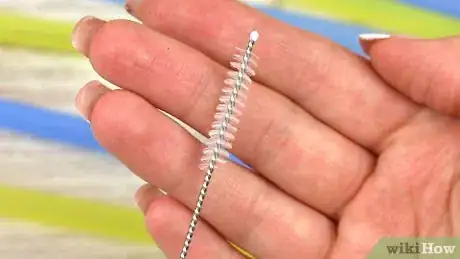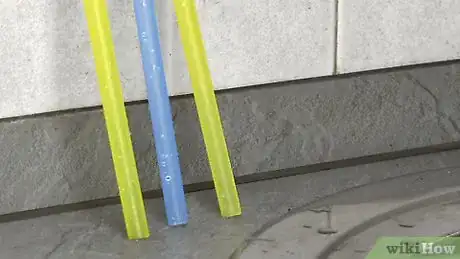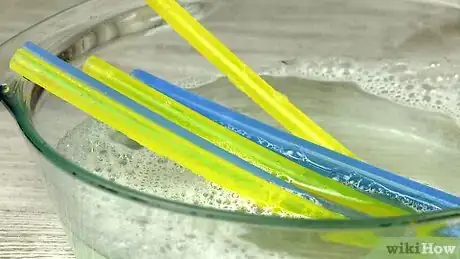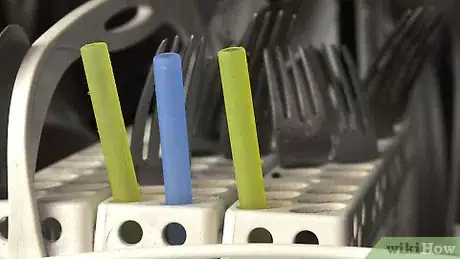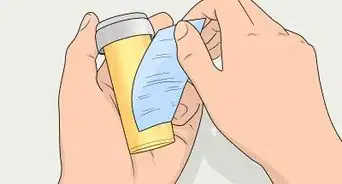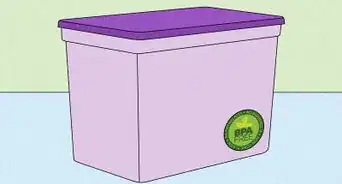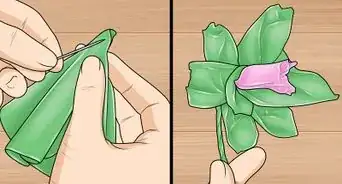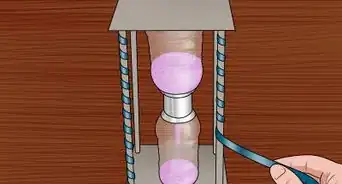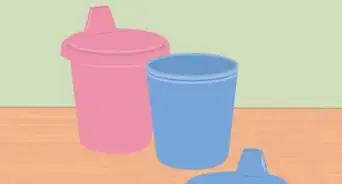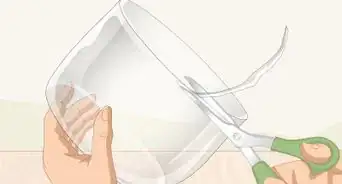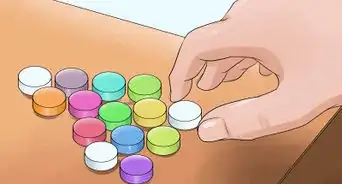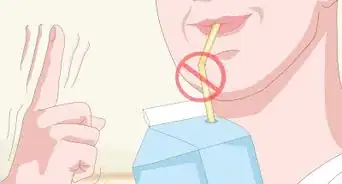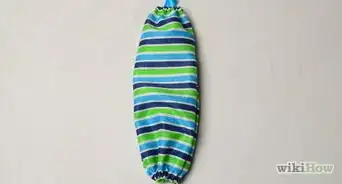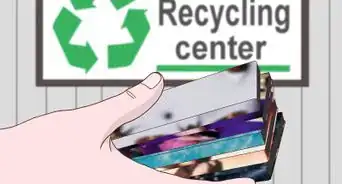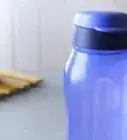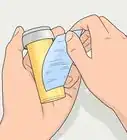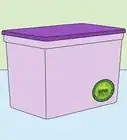This article was co-authored by Susan Stocker. Susan Stocker runs and owns Susan’s Green Cleaning, the #1 Green Cleaning Company in Seattle. She is well known in the region for outstanding customer service protocols — winning the 2017 Better Business Torch Award for Ethics & Integrity —and her energetic support of green cleaning practices.
This article has been viewed 49,453 times.
If you're looking for ways to make your lifestyle more sustainable, try using reusable straws instead of disposable ones – they create much less waste, so they are much better for the environment. They are also a great option if you just like using straws and want to have one available wherever you go. While their narrow opening might make them seem tricky to clean, cleaning out reusable straws is actually a simple process. The best way to clean a reusable straw is by using a pipe cleaner or cleaning brush. But don't fret – if you don’t have either on hand, there are other ways to clean out reusable straws that work just as well.
Steps
Cleaning Reusable Straws with a Brush or Pipe Cleaner
-
1Choose a pipe cleaner or brush that fits into your straw. Many reusable straws come with little brushes that are specifically designed to clean them out. If you have one of those, great! If not, you can easily use pipe cleaners to get the job done. Make sure the brush or pipe cleaner is long enough to clean out the entire straw.[1]
- If you are using a pipe cleaner that isn’t long enough, try twisting 2 or 3 together to get the desired length. Make sure to twist them tightly, so they don’t fall off inside the straw.[2]
- Always use clean pipe cleaners.
-
2Add dish soap to your pipe cleaner or cleaning brush. Squirt a few drops of dish soap onto the pipe cleaner or cleaning brush. You can use whatever dish soap you have on hand, or buy any brand you prefer.[3]
- Try a dish soap that contains natural ingredients if you are worried about ingesting soap residue.
- If the straw is grotty, soak it in a mix of equal parts water and vinegar overnight. If you don't have vinegar, you can replace it with lemon juice.
- You can also add vinegar to the pipe cleaner before inserting it into the straw.
Advertisement -
3Insert the pipe cleaner or brush into the straw and scrub vigorously. If you’re using a pipe cleaner, insert the pipe cleaner entirely through the straw until it comes out the other end. Pull it back and forth a few times to clean out any hidden material in the straw. When using a brush, insert it into the straw and vigorously scrub the brush against the inside of the straw to remove buildup.
- You may have to work on each end individually, especially if you're cleaning a twisty straw or an L-shaped metal straw. If this is the case, do your best to scrub each section of the straw, working on one end at a time.[4]
-
4Scrub the outside of the straw with a sponge. While the main reason you want to clean out your straw is to deal with hidden residue inside the straw, don’t forget to give the outside a quick scrub as well.[5] Use dish soap and a sponge to scrub the outside of the straw.
- If you don’t have a sponge available, just soap up your hands and scrub the outside of the straw with your fingers.
-
5Rinse the inside of the straw under warm water to remove the soap. Once you’ve scrubbed the inside and outside of your straw thoroughly, rinse it under warm water until you have removed all the soap residue – you wouldn't want to accidentally drink soap the next time you use the straw![6]
-
6Place the straw in an upright position so it can dry completely. Standing your straw in an upright position will allow excess water to drain out, letting the straw dry completely. Avoid mildew by letting your straw dry before putting it away.
- Use a drying rack to help your straw stay upright by leaning it against the metal frame.
Cleaning Reusable Straws without a Pipe Cleaner
-
1Run hot water through the straw as soon as you are done using it. If you don’t have a pipe cleaner or brush, it is best to rinse out your reusable straw immediately after use. If the straw sits for too long, the liquid you were drinking will dry and cake onto the inside of the straw, making it much harder to clean. Rushing hot water through the straw immediately after use will clean it out nicely.
- If you can't immediately rinse your straw, stick it into a water bottle and take a few sips of water. While this is not as effective as hot water, it is better than nothing.
-
2Soak the straw in warm soapy water, then rinse it completely. Soaking your straw in warm soapy water will break up any material stuck inside the straw. You can soak the straw for anywhere from a few minutes to several hours. Once you're done, run hot water through and over the outside of the straw to rinse our any loosened residue that might still be stuck in the straw.
- Try filling a large mason jar with warm soapy water and add the straw. Cap the jar and shake it thoroughly to help dislodge material. Then, rinse out the straw until all of the soap is removed. When cleaning bamboo straws, this is the best method to use.[7]
-
3Run the straw through the dishwasher. Most straws are dishwasher safe, but it is best to check the manufacturer instructions for the straw you are trying to clean. Once you’re confident your straw is dishwasher safe, place the straw in the bulk utensil section and run the dishwasher.[8] When clean, make sure the straw stands upright long enough for it to dry out completely.
- Stainless steel straws and glass straws do well in the dishwasher. Bamboo straws, on the other hand, should just be soaked and rinsed.
Community Q&A
-
QuestionWhat if my straws melt in the dishwasher because of their thickness?
 T. ChinsenTop AnswererMost reusable straws are stiff and solid. If you can bend it with your fingers, then it will not be dishwasher safe. The product label that came with the container will let you know whether it is dishwasher safe. If it is a branded item, look it up on the manufacturer's website.
T. ChinsenTop AnswererMost reusable straws are stiff and solid. If you can bend it with your fingers, then it will not be dishwasher safe. The product label that came with the container will let you know whether it is dishwasher safe. If it is a branded item, look it up on the manufacturer's website. -
QuestionHow often should you clean your straw?
 RubyTop AnswererClean the straw after every use, the same as you would for any other dishes.
RubyTop AnswererClean the straw after every use, the same as you would for any other dishes. -
QuestionI have metal straws. I have been cleaning them by placing them in a shallow container with warm water. I then add a couple of denture tablets and let them do their thing. Is this sufficient?While denture tablets are good enough for use in the mouth, they don't disinfect against mold and mildew, which is the main problem with reusable straws. It's better than nothing, but it would be best to try a different method that prevents mold buildup.
Things You’ll Need
- Cleaning brush or pipe cleaner (optional)
- Dish soap
- Sponge
- Dishwasher (optional)
- Mason jar (optional)
Expert Interview
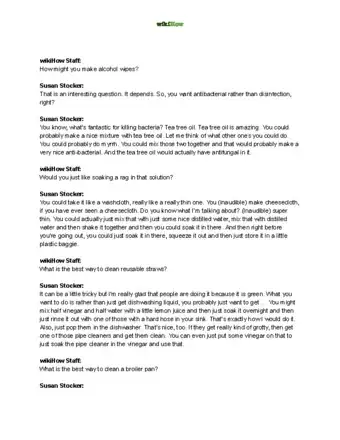
Thanks for reading our article! If you'd like to learn more about cleaning reusable straws, check out our in-depth interview with Susan Stocker.
References
- ↑ https://www.youtube.com/watch?v=gNCLD5lV2N0
- ↑ https://www.youtube.com/watch?v=gNCLD5lV2N0
- ↑ https://metro.co.uk/2018/08/04/properly-clean-reusable-straw-7798456/
- ↑ https://metro.co.uk/2018/08/04/properly-clean-reusable-straw-7798456/
- ↑ https://www.youtube.com/watch?v=L921runl53M
- ↑ https://www.mymommystyle.com/2013/09/26/how-to-clean-a-reusable-straw/
- ↑ http://bamboostraws.bigcartel.com/how-to-clean-bamboo-straws-easy-straw-care
- ↑ https://metro.co.uk/2018/08/04/properly-clean-reusable-straw-7798456/
About This Article
Reusable straws are a great way to save the environment, but don’t forget to clean yours regularly. Your straw may have come with a pipe cleaner but if it didn’t, buy a few to make cleaning your straw a breeze. Just squirt a few drops of dish soap onto the pipe cleaner, insert it into your straw, and work it up and down to clean the inside. Then, scrub the outside with a sponge and soapy water. If you don’t have a pipe cleaner, soak your straw in warm, soapy water for a few minutes. After you've cleaned your straw, rinse it with clean water and leave it to dry. Place it upright so the water can drain out properly. Alternatively, wash your straw in the dishwasher if it’s made of glass or stainless steel. Avoid dishwashing bamboo straws. For more tips, including how to combine pipe cleaners to clean long straws, read on!
